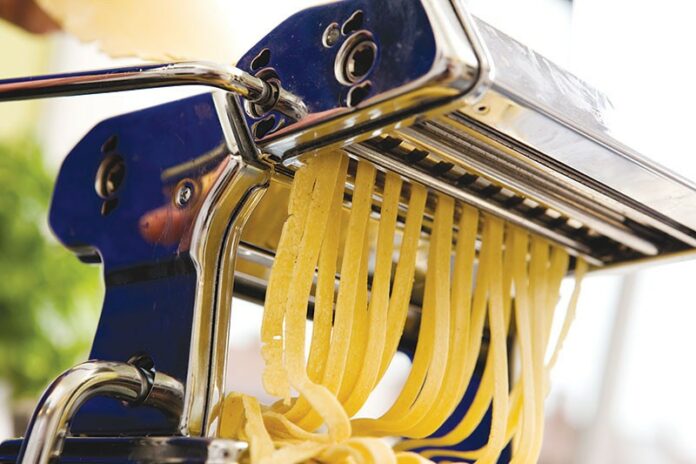When Leon and I went on our first trip to Italy last year, we accompanied a group of other PBS-loving strangers on a two-week whirl through Venice, Florence and Rome.
I’m glad we did, and not just because our tour allowed us to float past crowds into the Vatican, stream through lines into the Duomo and brush past queues at St. Mark’s—though I totally loved that bit.
Of course, I’m glad we did for a million reasons not pertaining to long lines, but particularly because one afternoon in Florence, we and our fellow PBS lovers donned clear plastic aprons, washed our hands vigorously and took a cooking lesson from a bright-eyed Italian wag who taught us how to make fresh pasta from scratch.
I have to admit that while standing in that Florentine kitchen, my middle-aged posture was one of a disaffected teen—all studied ennui. My tour companions looked so dumb and old! I hope, I thought, I die-die-die before that happens to me.
Then I caught sight of myself in a polished steel refrigerator door. Oh, right. I don’t hope I die, I don’t hope I die! Turns out, I’m no longer 17. I’m just like them, thrilled to be on a PBS lovers’ tour of Italy about to make pasta. Which happens to be one of the easiest bloody things to do in the world.
The trick with pasta, our Italian wag instructed, is to take out the liquid you put in. “Scarsa” is the word he introduced. “Scant.” Put a little in, take most of it out. He poured two cups of yellow semolina flour into a pyramid on the steel table in front of each group. He added one small cup of tepid tap water to each table. “Don’t use it all,” he warned in his excellent English. Scarsa.
We each took turns tipping a sacred amount of water into the semolina to gently incorporate. The flour, which is rough like sand, slowly drank it in. “Now you knead,” he said, using his palm to push the water from what was quickly becoming a pliable dough.
“Now you rest,” he said with a smile, wrapping the dough in plastic, placing it in that damned mirror-like fridge and instructing us that it was time for wine. There wasn’t a PBS lover among us who didn’t like hearing that command.
Arriving home from Italy, Leon and I soon went to the local fancy culinary store. A Wellness 150 hand-cranked pasta machine awaited, red and chic. We brought it home, clamped it onto a table, dusted it with semolina to “clean” it and began our Great Pasta Experiment.
Truth be told, it’s not much of an experiment. I haven’t yet tried ravioli or anything folded and tucked or stuffed. But fettuccine? Yes, ma’am. Best of all: homemade pasta is forgiving. Mine always looks like hell when it’s hanging from my fancy store rack and looks like heaven when streamed into a colander after cooking.
Plus, no one understands how easy this congregation of flour and water really is. Maybe you have to be middle-aged to enjoy it. Perhaps public television helps. I doubt it. It’s really about scant.











